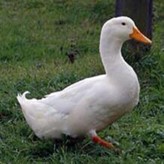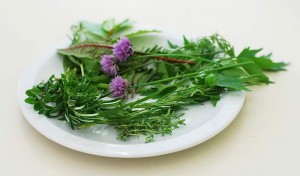Many of us have fruit trees in our landscape. They may be ther e for pleasure or profit. On our farm we have a small cluster of different fruit trees – mostly for the fruit and spring flower enjoyment. This year is the first that I have had to deal with bark damage on our trees. Your first thought might go to deer peeling the bark which is a common problem. Mine was less expected – our newly acquired dairy goat Mocha got out and has a great love for anything apple. She has done some major bark peeling (check out the photos).
e for pleasure or profit. On our farm we have a small cluster of different fruit trees – mostly for the fruit and spring flower enjoyment. This year is the first that I have had to deal with bark damage on our trees. Your first thought might go to deer peeling the bark which is a common problem. Mine was less expected – our newly acquired dairy goat Mocha got out and has a great love for anything apple. She has done some major bark peeling (check out the photos).
So I have had to do some learning about how to treat my damaged apple trees and wanted to share what I have learned with you. I hope it helps others who also must now repair bark damage, done by deer, goats or whoever.
Start by trying to identify who caused the damage.
In my case it was easy – we caught Mocha in the act. According to the University of Connecticut, white-tailed deer lack upper incisor teeth, so deer damage leaves a jagged edge on twigs or stems, compared with a clean-cut surface left by rodents and rabbit feeding.
Here are some of their ideas:
If the damage is low, it could be a rabbit. They are fond of fruit tree bark toward the end of winter when food is scarce and spring hasn’t arrived in full swing yet. They suggested “caging” the lower trunks of your fruit trees with chicken wire for the winter months to keep the rabbits off them. If it’s high up, it could be a deer rubbing it. That’s much harder. Deer are tricky to deter.
How do I repair it?
Sadly, the first thing I learned is this: you don’t repair it. You can trim any pieces that are hanging loose, and you let it heal and cross your fingers. W

rapping can be damaging in itself if you leave it on too long. And it can also make a nice, moist, protected area for opportunistic insects to gain a foothold (or mouth hold, as it was).
North Carolina State University gave these tips to helping your fruit trees recover. Young trees can sustain quite a bit of damage and still recover quickly. Older trees are more sensitive – and their recovery will be based on the amount of damage done. Vertical damage like mine is safer for the trees, than damage that is around the girth of the tree. Damage that is completely around the tree and down to the flesh of the tree is most likely a fatal wound.
They recommended the following first aide for your injured tree: the peeled bark should be treated to promote rapid healing. Trim around the wound to sound tissue on each side. Use a sharp, clean knife and do not cut any deeper than necessary. The top and bottom should be rounded into an oval shape instead of forming a sharp point. This will facilitate movement of moisture and nutrients around the damaged area. When done properly, healing will occur completely around the wound.
In our personal case: our first course of action is to solve Mocha getting out. Then we will following the first aide suggestions and hope for the best. I hope this information is as helpful as it was to me.
































